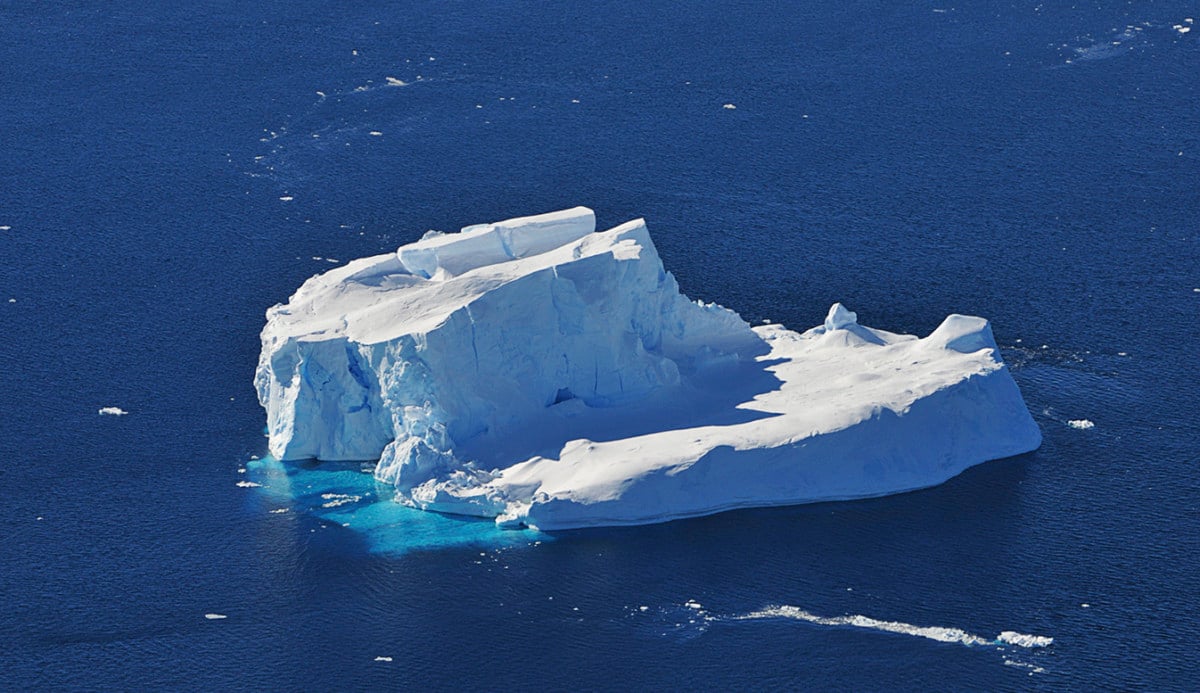Part of the Series
Planet or Profit
Some of the world’s most profound melting of glaciers is happening in the Antarctic; and is invisible from above.
According to a study recently published in the journal Nature Geoscience, the underwater melting of Antarctic glaciers is now occurring at a rate that is doubling every 20 years. This means that melting in the ice continent of Antarctica could soon outpace that occurring across Greenland, which would make Antarctica the single largest source of sea level rise.
The new study was the first complete underwater mapping of Antarctica, by far the world’s largest body of ice.
The study shows that warming ocean waters have caused the base of the ice near the ocean floor around the south pole to shrink by 1,463 kilometers from 2010 to 2016. This development will likely force worst-case projections of sea level rise to be revised upwards.
The current worst-case scenario outlined by the Intergovernmental Panel on Climate Change (IPCC) is just over 1.5 meters (4.9 feet) of sea level rise by 2100.
The new data, however, confirms a study from nearly five years ago, in which 90 sea level rise experts were surveyed and confirmed that sea level rise this century will exceed IPCC projections.
To see more stories like this, visit “Planet or Profit?”
Meanwhile, the US National Oceanic and Atmospheric Administration’s worst-case scenario is 2.5 meters (8.5 feet) by the same year. This worst-case scenario does not factor in the new data from the recent Antarctica study.
Glaciers Coming Unplugged
The study, based on an analysis of satellite data, found dramatic changes happening across eight of the major glaciers in Antarctica due to the warmer ocean water underneath them.
The water is melting the glacier ice away from the seafloor, which was acting as a sort of plug, keeping the ice attached to the bedrock. The study showed that the ice, which has been receding by nearly 200 meters per year, is causing the land-based ice to speed up its shift toward the sea, hence increasing sea level rise projections.
The study also warned that this phenomenon suggests a widespread pattern of rapidly increasing melting all the way around Antarctica.
“We’re seeing this all across the ice sheet,” University of Leeds climate researcher Hannes Konrad, lead author of the analysis, told Inside Climate News. “As the grounding line of the ice shelves moves back, the inland glaciers accelerate and raise global sea level.”
The rate of retreat of Antarctica’s eight major glaciers has now accelerated to five times the historical average, according to the study.
Sea level rise projections of more than three meters are currently being openly discussed.
A 2017 study by Cornell University showed that rising seas could result in two billion refugees by 2100. That is one-fifth of the total projected global population of humans, which would be 11 billion by then. Moreover, that data is based on the current, lower sea level rise projections; predictions may well increase in the near future.
Join us in defending the truth before it’s too late
The future of independent journalism is uncertain, and the consequences of losing it are too grave to ignore. To ensure Truthout remains safe, strong, and free, we need to raise $46,000 in the next 7 days. Every dollar raised goes directly toward the costs of producing news you can trust.
Please give what you can — because by supporting us with a tax-deductible donation, you’re not just preserving a source of news, you’re helping to safeguard what’s left of our democracy.
